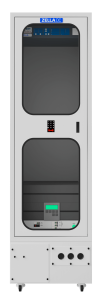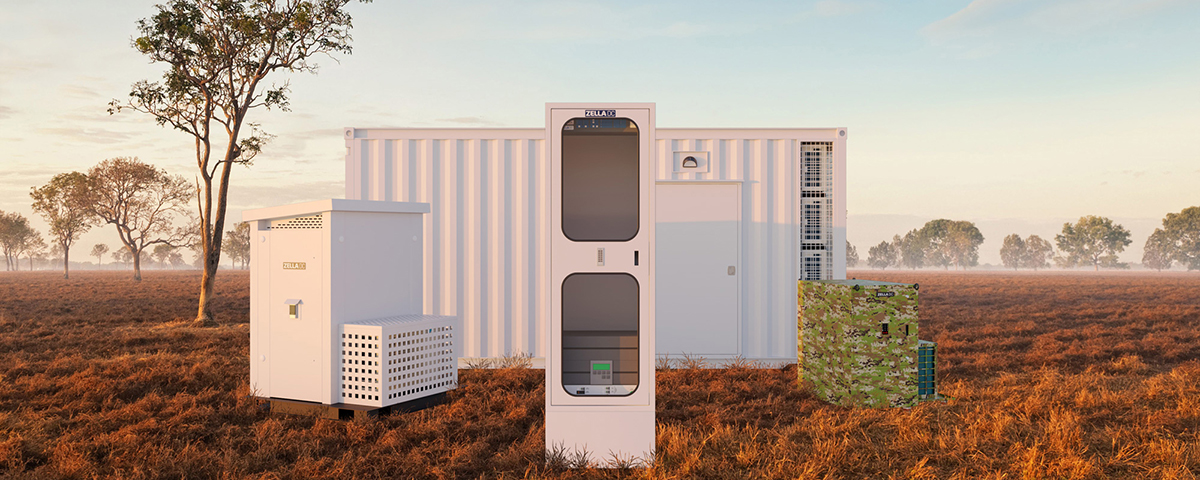Despite the widespread adoption of cloud computing, many companies continue to invest in in-house server rooms. This decision may appear counterintuitive in an era leaning heavily towards cloud solutions, but several compelling reasons justify the sustained relevance of physical server infrastructure.
Why do companies keep servers in-house
There are several reasons why companies may decide to keep servers in-house:
Cost of cloud services – While cloud computing offers scalability, the costs can be substantial. Companies face charges based on data storage and transfer volumes, which can quickly accumulate and exceed budget expectations.
Network latency – Accessing cloud services involves data transmission over networks, which can introduce delays. Physical distance from cloud servers exacerbates this issue, potentially disrupting business operations. Moreover, limited bandwidth can further compound these delays, necessitating costly broadband upgrades.
Data security – Certain sensitive information, such as personal data or proprietary content, must remain confidential and secure. Regulatory and security policies often mandate that this data be housed on-premises, beyond the reach of external networks.
Business Continuity Planning (BCP) – Relying solely on cloud services can be risky. Local backups serve as a crucial fallback in the event of cloud service or network failures, ensuring business operations can continue without interruption.
Who needs a server room?
There are many reasons why businesses might need to establish a new server room:
- relocation
- office reconfiguration
- expansion (adding a new branch or satellite office)
- the need for an increased number of servers
When servers are kept in an office environment or shared spaces, issues may arise from:
- noise complaints
- climate control issues during non-business hours, when the air conditioning is turned off
- security risks due to the inability to control access to the servers
Existing setups may need reassessment due to:
- ageing infrastructure
- reduced server count (due to data being moved to the cloud)
- ineffective climate control
- high electricity costs
- enhancing resilience through separate backup locations
Challenges and strategic considerations in the cloud era
As businesses leverage both cloud solutions and on-premises server rooms, effective staffing remains critical. Operating an on-premises server room goes beyond managing IT equipment; it involves understanding and monitoring equipment performance. With the growing shortage of skilled personnel in IT departments, future server rooms must aim to minimise operational demands and enhance transparency in their operational status.
Additionally, companies are now required to disclose the environmental impact of their operations, necessitating features that report metrics like electricity consumption.
Setting up a server room also involves considering various physical requirements, including adequate space for server storage and movement, power supply capacity, and floor load capacity. Essential functionalities include:
Air conditioning systems – Due to the high heat output of servers, dedicated air conditioning systems are necessary, apart from the standard building cooling solutions.
Fire suppression systems – Water-based sprinkler systems are unsuitable for server rooms, making gas-based fire suppression systems essential for protecting IT equipment.
Physical security – Server rooms storing sensitive data must be secured against unauthorised access. by locking rooms and racks and tracking entry to prevent internal crimes and meet business partner demands.
Cost – Evaluate the total cost of ownership, including initial setup, ongoing electricity, maintenance expenses, personnel costs, and equipment renewal.
Sizing – Accurately predict future needs to avoid space shortages as server demand grows, ensuring room for expansion.
Construction timeline – Prepare in advance to ensure the server room is operational immediately upon office relocation, with an average setup time of about 18 months.
Environmental impact – High electricity usage for IT operations and cooling demands efficient solutions to minimise environmental impact and manage rising energy costs.
Noise control – To avoid disturbances to adjacent areas, consider soundproofing solutions or isolated server room constructions.
Next generation server room: Zella Pro micro data centre
 The Zella Pro micro data centre addresses the traditional challenges associated with server rooms. It offers a compact and efficient solution equipped with air conditioning, fire suppression, and robust security measures. Features such as noise reduction and IP65 dust and waterproofing make it suitable for various environments, from offices to industrial settings.
The Zella Pro micro data centre addresses the traditional challenges associated with server rooms. It offers a compact and efficient solution equipped with air conditioning, fire suppression, and robust security measures. Features such as noise reduction and IP65 dust and waterproofing make it suitable for various environments, from offices to industrial settings.
The unit’s scalability allows for gradual expansion, avoiding the oversizing risks associated with traditional server rooms. Moreover, its energy-efficient design minimises CO2 emissions and reduces operating costs.
Furthermore, Zella Sense technology enables remote monitoring and management, ensuring that businesses can maintain full control and visibility over their data infrastructure.
While cloud computing continues to dominate the IT landscape, the role of in-house server rooms remains critical. By balancing cloud services with on-premises solutions, companies can leverage the strengths of both to optimise operational efficiency, security, and cost-effectiveness. The introduction of advanced solutions like the Zella Pro micro data centre further enhances the feasibility and appeal of maintaining physical IT infrastructure in the modern business environment.
Read on
- Zella Pro: whisper-quiet IT equipment storage for any environment
- Server room vs. micro data centre: all you need to know
- Learn how the Zella Pro can help you lower your carbon emissions
Key takeaways
- Ongoing costs for cloud services can quickly add up, making in-house servers a cost-effective alternative for many businesses.
- In-house servers help minimise network latency issues, especially for businesses located far from cloud data centres.
- Maintaining sensitive data on-premises is often necessary to comply with strict regulatory and security requirements.
- Local server rooms serve as critical backups to ensure business operations continue smoothly during cloud outages.
- Effective management of physical server infrastructure requires skilled IT personnel and strategic planning to handle operational demands and transparency.
- Technologies like the Zella Pro micro data centre provide scalable, efficient, and secure alternatives to traditional server rooms, integrating essential functionalities like air conditioning, fire suppression, and robust security measures.






